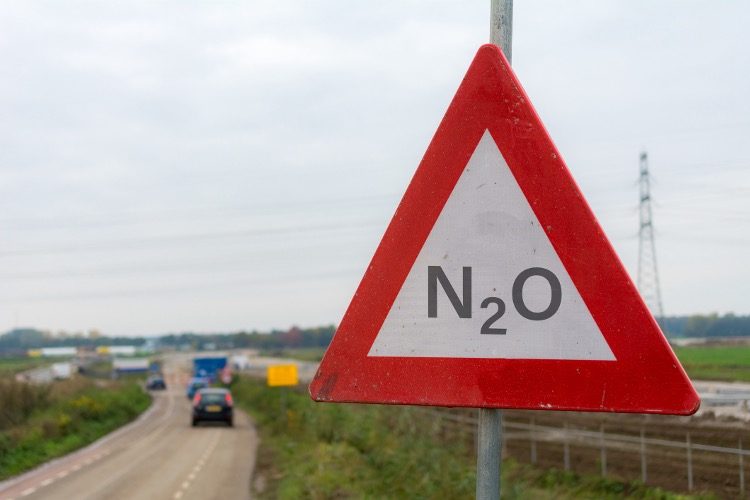
A study from Boston College has concluded that nitrous oxide (N2O), colloquially known as laughing gas for the euphoric effects people feel when inhaling it, is an under-recognized threat to the Earth’s climate. N2O is also used in certain fertilizers and it is commonly found in animal waste. The agricultural industry is responsible for approximately three-fourths of N2O emissions.
While the atmospheric concentration of N2O is approximately 330 parts per billion (ppb) — less that a thousandth that of carbon dioxide at around 426 parts per million (ppm) — researchers at Boston College nevertheless conclude that its use must be curtailed quickly to avoid the worst effects of anthropogenic climate change, as it is allegedly a much more potent greenhouse gas than CO2.
“Nitrous oxide emissions from human activities must decline in order to limit global temperature rise to 2°C as established by the Paris Agreement,” said the study’s lead author Hanqin Tian, the Schiller Institute professor of global sustainability at Boston College. “Reducing nitrous oxide emissions is the only solution since at this point no technologies exist that can remove nitrous oxide from the atmosphere.”
At 330 ppb, N2O represents a measly 0.000033 percent of the atmosphere. Still, the Boston College team is concerned about a recent surge in N2O emissions, from the agricultural industry in particular.
“This emission increase is taking place when the global greenhouse gasses should be rapidly declining towards net zero emissions if we have any chance to avoid the worst effects of climate change,” Tian said.
The worst N2O emitters, according to the researchers, are China, India, the United States, Brazil, Russia, Pakistan, Australia, Indonesia, Turkey, and Canada. Researchers are concerned beacause N2O is a longer-lasting and more potent greenhouse gas than CO2.
According to the study, N2O emissions must be cut dramatically in order to “stabilize” the Earth’s climate.
“Significant reductions in N2O emissions are required along with net CO2 emissions to stabilize the global climate system. For pathways consistent with the remaining carbon budget of 1.5, 1.7, and 2 °C stabilization, and assuming that all greenhouse gases (GHGs) should be cut in equal proportion to their contribution to anthropogenic radiative forcing, global N2O emissions need to be reduced by 22 %, 18 %, and 11 %, respectively, by 2050,” the study concludes.
Why this new study on nitrous oxide? It’s unlikely that climate alarmists finally realize that blaming CO2 for the planet’s warming is ridiculous and are now looking for a new scapegoat.
“This study doesn’t shift blame, it adds it, nitrous oxide is being emitted by humans so humans are still to blame for the recent warming, according to alarmists,” H. Sterling Burnett, the Director of the Arthur B. Robinson Center on Climate and Environmental Policy at the Heartland Institute, told The New American. “What they can’t answer however is why temperatures are so low. According to their assumptions about the climate’s sensitivity to CO2 and climate model projections the Earth should be warmer now than it is.”
“This doesn’t even take into account the growth in methane and nitrous oxide, and CFC concentrations. Since the latter three gasses, although not as large a percentage of the atmosphere, are much more potent greenhouse gasses, the Earth should be far warmer than it actually is, if you believe the alarmists’ hype,” Burnett said.
This suggests that the science isn’t nearly as settled as Al Gore and the rest of the climate cultists claim.
“What this proves, yet again, is that the science isn’t settled and we know relatively little about the causes and consequences of the present modest warming,” Burnett said. “It also strongly suggests … that climate change poses no crisis, much less an existential threat to human existence or flourishing.”





